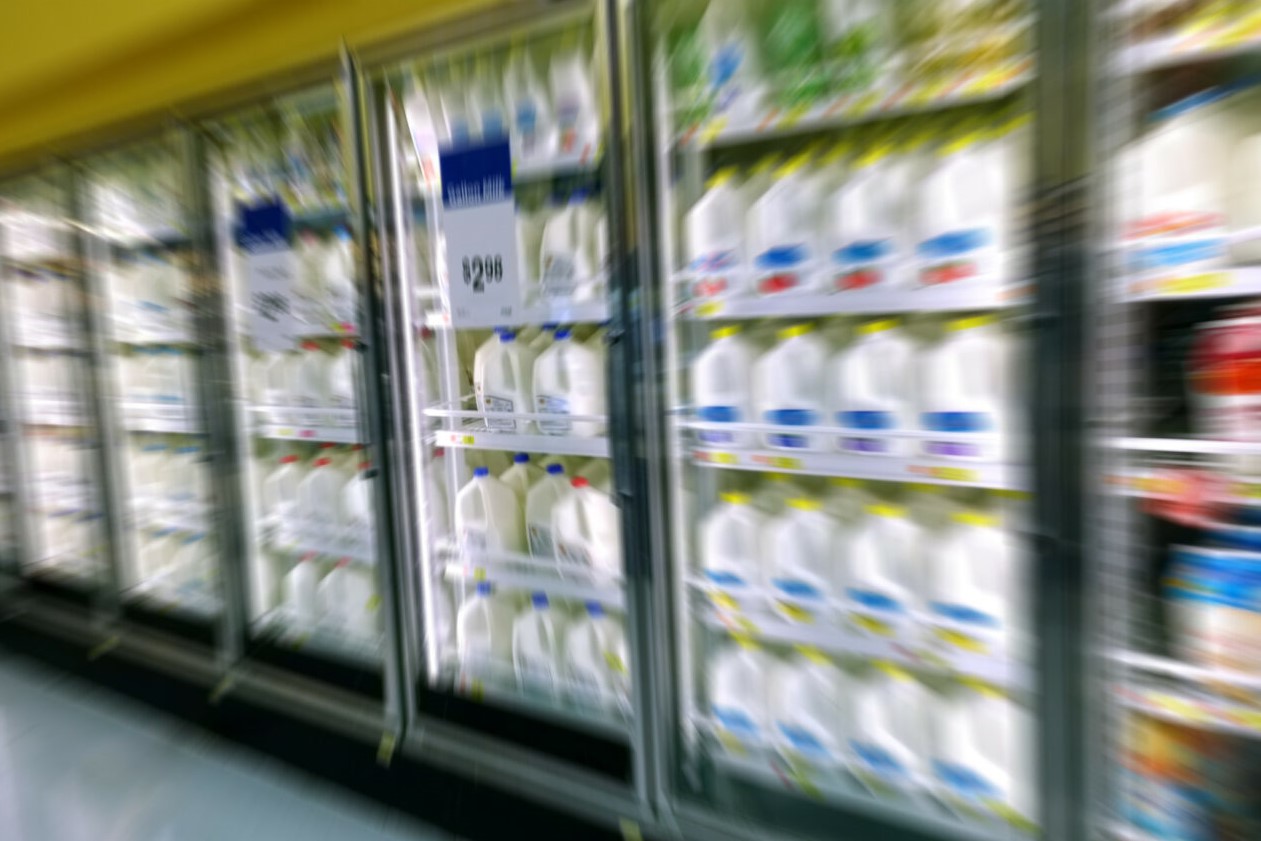Global dairy markets – present and future explored

The RaboResearch global dairy team recently attended and presented at the World Dairy Expo held in Madison, Wisconsin. The event in October brought together their team of dairy analysts from around the globe to discuss the global dairy industry, with topics focusing on factors influencing dairy markets and prices.
In her presentation, Mary Ledman, global strategist in RaboResearch’s dairy team, kicked off by saying: “Things are changing. We’re seeing the Chinese farmgate milk price drop and the farmgate milk pricing in export regions rise. As Chinese milk prices become more competitive, there’s less need for China to import product and that is having an impact on New Zealand.”
Ledman highlighted the transformation that China has undergone in the last 5 years due to the Chinese government consciously expanding their dairy industry and increasing milk production, which has been transformational. The country has gone from 70% self-sufficiency to 85% self-sufficiency – this has had a major impact on the global dairy market.
Ledman went on to look at the global market and the years ahead: “Who is going to supply milk to meet increased global demand from 2020 and 2030 as the global population increases?” She noted that South America and the US will “just offset the decline in milk production in Oceania and Europe”.
United States
There has been a steady growth in US production, but over the past few years milk production has stagnated, however. “The US is still a good place to make milk,” said senior analyst Lucas Fuess. “The outlook is better and there are bright spots on the horizon,” he added, noting that growth is expected in demand and export markets in 2025.
“When looking at long-term growth in the US, this will primarily be based on yield,” he highlighted, adding that the US is poised to continue increasing milk output. Fuess sees the US as competitive with some challenges in some regions, for example feed costs, weather and water. However, the US dairy sector is still growing and taking advantage of growing demand for dairy products globally. A return to profitability in the near future should lead to a return to production growth, he said.
Europe
Analyst Danielle Duijndam showed the increase in milk production in Europe from 2011 onwards, with growth particularly visible in northern European countries – the Netherlands, Germany, Belgium and Denmark. The removal of the milk quota system has impacted the growth in Europe since 2015. Poland and Ireland stand out with significant growth, she said, noting, however, that it is expected that European milk production will decline in the future. She mentioned challenges such as labour, farm succession and the Green Deal as issues that will impact milk production. “We can expect more impact on the dairy herd and milk production due to stricter targets and regulations,” she noted.
Touching on some EU countries, she mentioned that Poland’s production is expected to increase due to favourable weather conditions and the transition from backyard farming to more professional farms that will increase productivity per cow. The Netherlands is facing strict regulation regarding nitrogen and water quality, as well as government buy-out schemes to reduce livestock numbers. All of these issues, she says, will drive production in Europe. Duijndam noted that despite all these issues, dairy farmers in Europe have a bright future.
Australia
Talking about Australian dairy, senior analyst Michael Harvey stressed the current big drop in production across the country. There has also been a big shift due to reasons such as climate change, and the country has seen a “significant migration away from dairy production to permanent crops such as almonds, citrus fruits, and the like.” Australia currently still exports about 30% of it’s dairy production to the the Asia-Pacific region, yet imports a significant volume of dairy from the global market, mainly cheese for the food service sector. Drought is a major issue in Australia, having a domino effect on growing feed, and there is less water for irrigating crops.
In terms of numbers, the country went from 9 million metric tonnes to 8 million tonnes of milk supply. Drought and labour availability have challenged the sector recently, but these issues are now stabilising.
“We might see 1% growth with the current season, but if we have another drought it will impact our milk supply significantly. However, that’s not what we expect at the moment,” said Harvey.
Regarding growth markets, he said there’s a focus on cheese in southeast Asia and China. “We’ve clearly moved away from producing ingredients such as skimmed milk powder, butter and whole milk powder,” he continued. There has also been a strategic move to focus the industry on cheese and whey with an eye on the domestic cheese market, but also in view of the growth markets for cheese in southeast Asia and China. “At the moment, margins are good for our farmers,” he added.
New Zealand
“Dairy is a very important sector in New Zealand,” stated senior analyst Emma Higgins. She pointed out that it’s mostly a grass-based system, which she says makes the drivers in New Zealand’s sector different. One of these is the weather, which is very variable – weather as well as milk prices and ratio of milk prices to production costs. She stressed that the major industry growth drivers are environmental regulations and access to water. Weather has played a role in the year-on-year decline in milk production in recent years.
“When it comes to productivity, we achieve about 400 kg of milk solids per cow, and we produce about 4,300 litres per cow – so there’s a real opportunity to grow.” She believes there will probably be fewer cows due to environmental regulation and consolidation in New Zealand’s dairy industry.
Brazil and Argentina
Senior analyst Andres Padilla’s presentation focused on Brazil and Argentina. Regarding Brazil, Padilla started off by saying: “We are a superpower in agribusiness with increasing volumes of soybeans, corn, beef and poultry exports, sugar and ethanol – but not dairy.”
The main reason, Padilla said, is regulation – import barriers. He gave an example: to import dairy products into Brazil from the US, 27% tax has to be paid, whereas no tax is due when importing from Argentina. This means that Brazil is a net importer of dairy products, importing most of its dairy products from neighbouring Argentina and Uruguay.
He also noted that there has been a change in the production base: “We produce a third of the milk that the US produces, but we have about 10 times more dairy farms. That’s beginning to change, because the average dairy farm is starting to get bigger, productivity is increasing, and that means we will see additional growth in our milk production in the coming years, with more efficient farmers.”
Padilla added that more investment is needed in genetics and scale to be able to grow faster and become more competitive.
Argentina has huge potential to be a much bigger exporter of dairy products, accounting for 5% of global dairy trade, he added. But issues such as the economy, inflation, lack of logistics and instability mean there is less investment in dairy. However, better policies are now in place to help farmers.
China

Dairy analyst Michelle Huang joined the panel to talk about China, the world’s largest consumer of milk and dairy products. She noted that the country’s imports have declined in recent years. “We expect China’s import volume to decline by 12% this year, with this trend continuing into next year. The decline in import volume is largely due to oversupply, while domestic demand for dairy products is weak.” In recent years, she added, the government encouraged milk production to increase by 11 million metric tonnes, reaching a total of 42 million metric tonnes last year – about 5% of the global milk production volume.
Demand for dairy products is currently weak and still declining. There has been some consolidation of China’s dairy farms with fewer smaller farms. Milk production is expected to slow, with a slight decline next year, and a reduction in milk yield is also expected. In the longer term, China will continue as dairy products importer, but at a much lower level than in the 2021 peak period.
Production will also slow as large-scale dairy farms feel the pressure and as sluggish demand affects dairy processors. Feed costs in China account for about 70% of its total production costs. “This year and next year there will be a recovery in Chinese demand. I would also like to point out that China’s growth has passed its peak – in the last decade we saw 6% annual growth in China’s dairy products, but in the next few years, we expect only a 2% of growth in volume.”
She added: “We will shift from volume to value growth in the future – for example butter and cheese will outperform liquid milk, and value-added benefits like nutritious benefits will drive the growth of China’s dairy industry in the future.”






